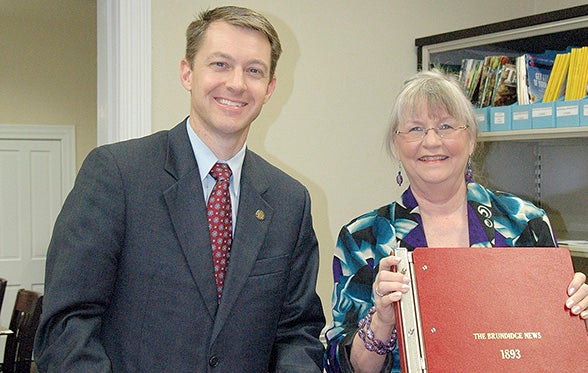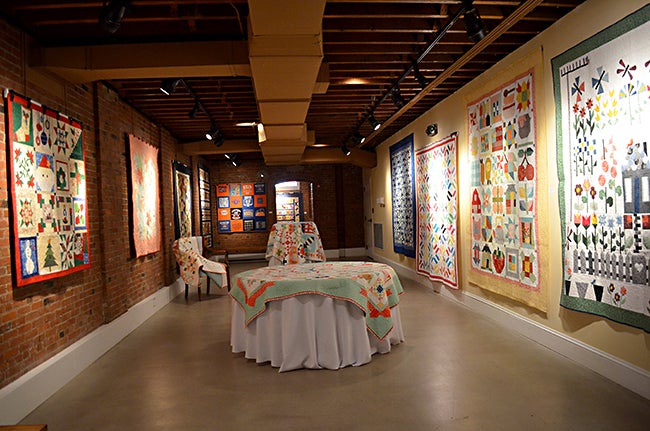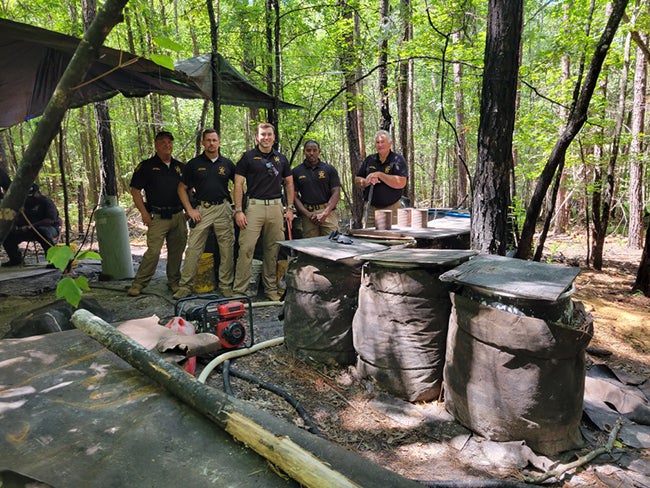The binding of time
Published 5:51 pm Wednesday, January 6, 2016

Pike County Probate Judge loaned bound and preserved copies of the former Brundidge News and Brundidge Banner newspapers to the Tupper Lightfoot Memorial Library this week. Librarian Teresa Trawick joined Allen in reviewing the bound volumes now available for the community to peruse at the library.
And, among those important documents are the volumes of county newspapers that are housed in the downstairs of the Pike County Courthouse.
“The preservation of our county’s history has a high priority at our office, therefore, the preservation of our local newspapers has a high priority,” Allen said. “Our local newspapers record the history of our community and it is important that those records be preserved.”
Allen was in Brundidge Wednesday to present four bound volumes of “The Brundidge News” for loan to the Tupper Lightfoot Memorial Library.
The bound volumes were from 1893, 1895, 1911 and 1912.
“We chose to start binding with those years because those newspapers were in the worst condition,” Allen said. “We wanted to make them available at the Brundidge library so they would be more accessible to people in this area.”
The pages of the newspapers have been individually preserved in archival plastic for now and for future generations.
Allen said a Texas company was chosen for the preservation project because of the process.
“Most companies require you to send the newspapers to them,” Allen said.
“The company that we used came here and the biding was done on site. The plastic was hand cut for each page. Before they were bound, the pages could come apart at the touch. In the plastic sleeves, you and roll the pages without damaging them. These bound volumes will be available for many generations to come.”
Teresa Trawick, head librarian, expressed appreciation to Allen and his staff for their commitment to the preservation of the county’s history.
“Community newspapers are often the only record history of a community,” Trawick said.
“Newspapers tell the story of a community that can’t be found anywhere else. I been fascinated just looking through these four volumes. I’ve learned things about the Brundidge community that I would not have known otherwise. Like Judge Allen said, looking through old newspapers can be addictive.”
Allen said newspapers do tell the story of a community and of the times.
“Back 100 years ago or more, newspapers were the only way people had to communicate,” he said. “There were no televisions or radios, so people had to get their news from newspapers. Looking through the newspapers of the late 1800s, we can learn a lot about life during those times.”
He pointed to the illustrations that were hand sketched. There were no photographs.
“It’s interesting to me that there were articles in the newspapers about travels to places like Belgium,” Allen said. “The newspapers were educational tools because they opened the doors to the world.”
Trawick said newspapers were also a form of entertainment for the family.
“An entire page was dedicated to stories like this one,” she said. “‘Keith of the Border: A Tale of the Plains’ was a standing feature. I can imagine the family sitting around together with, probably, the daddy reading the story. Newspapers were the radio and television of those days.”
Through the newspapers, people could learn about a bad wreck in Troy or the new buildings at Alabama Polytechnic Institute
“The advertisements also told the story of what was important to people 100 year ago,” Allen said. “You could get a full set of teeth for four dollars or get Sloan’s Liniment for a lame leg.”
The social news was also recorded. “Mrs. Fanny Porter was reported to have visited friends in Dothan and afterwards returned to her home in Troy – to the regret of all.”
“I wonder what meant,” Allen said, laughing. “
The old newspapers gave insight into the humor of the times.
Rooster: Mr. Pig is making a big hit on stage.
Hen: What is he playing?
Rooster: Ham-let.
“These newspapers are very entertaining,” Trawick said. “They are a great addition to the Tupper Lightfoot Memorial Library. They will also be beneficial to historians and to those doing genealogical research. We greatly appreciate Judge Allen and his staff for making them available to us.
“And, we are proud to know that his office plans to continue its efforts to preserve the county’s history through the binding of old newspapers.”





